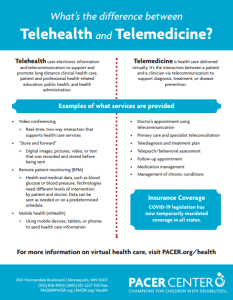Free telehealth appointments expand access to oral antivirals
The Washington State Department of Health (DOH) has relaunched its popular free telehealth program to increase access to potentially life-saving medication to treat COVID-19. The program expands the federal government’s Test to Treat initiative and gives people at risk of severe disease another way to quickly access treatment.
DOH’s telehealth program is an easy way to see if COVID-19 oral antivirals, such as Paxlovid, are right for you. Oral antivirals, which are COVID-19 treatment pills taken by mouth, are available by prescription only and must be started within five days of the first symptoms to be effective. Telehealth allows patients to connect with a clinician without having to go to a health care facility in person. This reduces barriers to access, especially in rural and underserved urban areas, and allows patients to stay at home for assessment and treatment, reducing the potential spread of the disease.
“Equity, innovation, and engagement are the cornerstone values that have informed DOH throughout our COVID-19 response,” said Umair A. Shah, MD, MPH, Secretary of Health. “Ensuring that we continue this important program that connects communities with needed therapeutics is an essential step in continuing our mission of reducing unnecessary deaths from this disease.”
Between July 28 and Dec. 31, 2022, DOH’s telehealth program:
- Served 6,329 patients from over 400 zip codes throughout Washington state.
- Provided over 4,200 prescriptions to patients with positive COVID-19 tests.
- Served over 975 patients that live in high Equitable Distribution Index (EDI) areas.
DOH encourages people who test positive for COVID-19 to discuss treatment options with their primary health care provider. In situations where this might not be possible, free telehealth consultations can make it easier to access treatments. People who test positive for COVID-19, including with a self-test, can consult with a health care provider using a smartphone or computer with a high-speed internet connection. If treatment is appropriate, they can receive a free prescription for oral antivirals for pick-up from over 1,000 pharmacies throughout the state that has the medication available. They can also choose to have the medication delivered.
Visit DOH’s new telehealth webpage to set up a telehealth appointment or call the DOH COVID-19 call center at 1-800-525-0127 if you have any questions. If the information provided indicates treatment may be appropriate, the patient will be connected virtually with a health care provider for a consultation. Telehealth appointments are currently available every day from 8:00 a.m. to 8:00 p.m. PST in 240 languages via DOH’s collaboration partner Color Health.
“Restarting DOH’s telehealth program ensures that patients at high risk for severe disease have equitable access to lifesaving COVID-19 treatments,” said Tao Sheng Kwan-Gett, MD, MPH, Chief Science Officer. “This service is free for everyone so that even those without insurance can access antiviral medications. Offering free telehealth consultations in multiple languages also increases access for non-English speakers.”
DOH will reassess the program in June to determine if it should continue in light of future needs.


